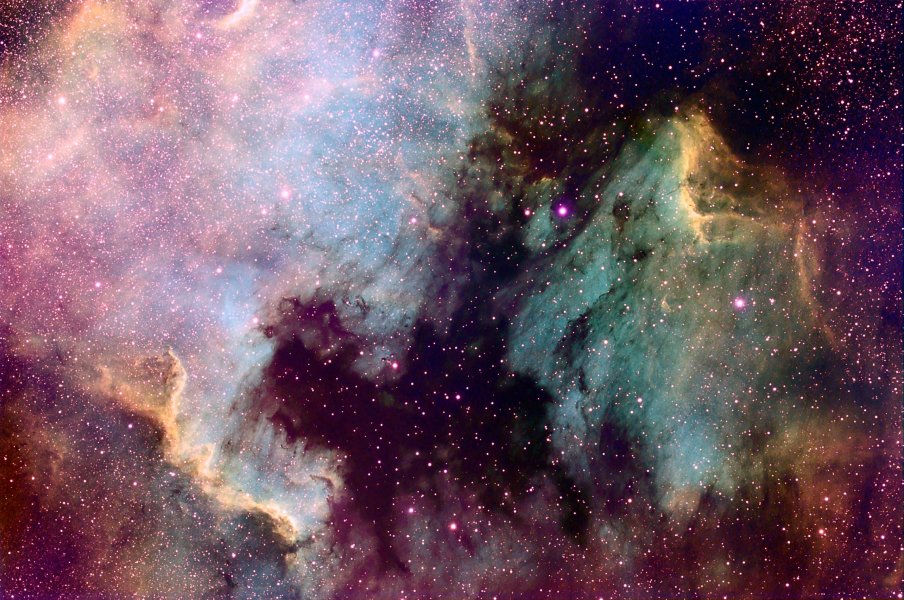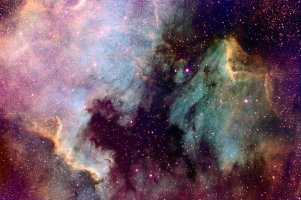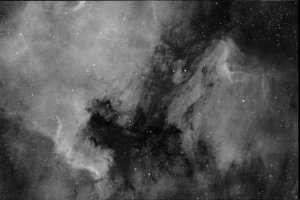NGC 7000 and IC 5070 (Narrowband) |
||
 |
||
|
||
| Cygnus the Swan, or the Northern Cross, cuts
through the band of the Milky Way. As a result of this location,
this constellation is host to a ton of galactic clouds of gas
and dust (nebulae, as discussed elsewhere in this site). Near
its brightest star Deneb (which is the head of the Cross or the
tail of the Swan, depending on your point of view) lie nebulae
that closely resemble their monikers: the North American Nebula
(NGC 7000) and the Pelican Nebula (IC 5070). Both nebulae belong to a large collection of gas and dust clouds lying along the disk of the Milky Way. Similar to other emission nebulae, NGC 7000 and IC 5070 are star-forming regions, and both have open clusters of stars already associated with and formed from them. Oddly enough, the exact source of illumination for these nebulae has not yet been established. One of the current best guesses is a star (and not a very bright one from our perspective!) lying just off the "coast of Florida" near NGC 7000. It's not that the star is not very energetic or bright; it's likely that the star is simply cloaked or dramatically dimmed by an intervening dark cloud of dust (likely the source of the dark band between the two nebulae). |
||
| Constellation: Cygnus | ||
| When Visible: July - December | ||
| Distance: 2,000 Light-years | ||
| Date: June 2006 | ||
| Location: West Chester, Ohio | ||
| Exposure Details:
H-alpha: 6 x 30 minutes Binned 1x1 SII: 6 x 30 minutes Binned 1x1 OIII: 6 x 30 minutes Binned 1x1 |
||
| Equipment Used: Takahashi FSQ-106N on a Takahashi EM200 Temma-II mount. SBIG STL-6303 camera with 5-position filter wheel and Astrodon narrowband filters. Externally guided with an SBIG Remote Guide Head on a Borg 76ED refractor. | ||
| Acquisition Software : MaximDL, TheSky6 | ||
| Processing Software: MaximDL, Photoshop CS, IrFanView | ||


